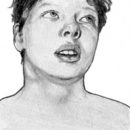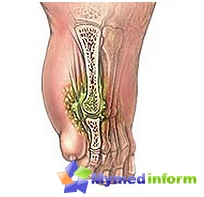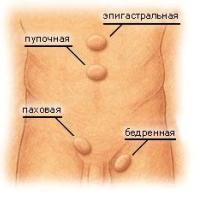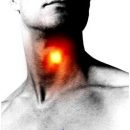What are the testimony for the operation on the thyroid gland? How is the operation going? What should be further treatment and recovery after surgery? Answers to these and other questions you will find in the article.
Content
What are the testimony for the operation on the thyroid
Previously, the diseases of the thyroid gland, especially in the form of a noticeable increase and increased activity, were treated only by surgical. In 1909, Professor Theodor Kochler from Switzerland was awarded the Nobel Prize for Medicine for making thyroidectomy safe operation. Over the past 50 years, numerous discoveries in the field of drugs of the thyroid gland have been made, which reduced the need for surgical treatment. However, and currently surgical intervention still remains an important part of the treatment of many diseases of the thyroid gland.
 Surgical treatment is particularly shown to those patients whose nodes can be considered malignant, which is found mainly by using a thin game aspiration biopsy (tab). Although the thin-game aspiration biopsy allows you to detect a cancer fabric, it often points to malignant, discovering «Cellic», or «Follicular» Damage so that although the result of a thin game aspiration biopsy may not specify directly to the diagnosis of cancer, it can give a result indicating the possibility of a cancer tumor requiring surgical treatment. Patients with increased activity and increasing thyroid gland may require surgical treatment. Such treatment is especially necessary if these patients have single or multiple nodes in the thyroid gland. Less, surgical treatment with patients with diffuse toxic goiter (DTZ), but even in this case, patients with a significant increase in the volume of the gland or with diffuse toxic goiter, in which there is a single node, determined when scanning as cold, or unusual patients with weak absorption Radioactive iodine can be shown surgical treatment.
Surgical treatment is particularly shown to those patients whose nodes can be considered malignant, which is found mainly by using a thin game aspiration biopsy (tab). Although the thin-game aspiration biopsy allows you to detect a cancer fabric, it often points to malignant, discovering «Cellic», or «Follicular» Damage so that although the result of a thin game aspiration biopsy may not specify directly to the diagnosis of cancer, it can give a result indicating the possibility of a cancer tumor requiring surgical treatment. Patients with increased activity and increasing thyroid gland may require surgical treatment. Such treatment is especially necessary if these patients have single or multiple nodes in the thyroid gland. Less, surgical treatment with patients with diffuse toxic goiter (DTZ), but even in this case, patients with a significant increase in the volume of the gland or with diffuse toxic goiter, in which there is a single node, determined when scanning as cold, or unusual patients with weak absorption Radioactive iodine can be shown surgical treatment.
In patients who were subjected to exposure to the treatment of skin in the area of the head and neck, the nodility of the thyroid gland may develop, which may require surgical treatment, especially due to the fact that in such cases the frequency of the gland cancer ranges from 30 to 60%.
Sometimes the thyroid gland in patients can increase to such an extent that it puts pressure on the esophagus or trachea, making it difficult to swallowing or creating a feeling of suffocation. This can be established using an X-ray study of the organs of the chest, in which it can be seen that the respiratory throat is shifted by an increased thyroid gland. In such a situation, you can prefer a surgical operation that will help remove these phenomena.
How is the operation going
The patient who requires the operation of the thyroid gland is usually put in the hospital the day before the operation after the corresponding preoperative examination, which may include radiography of the chest organs, electrocardiogram, and various blood tests, including the tests of the functional activity of the thyroid gland. Surgical intervention is carried out through a relatively short cut from the central bottom of the neck. Spread the central muscles of the neck and remove the lobes of the thyroid gland, pre-carefully sweeping over the upper guttural and returnable guttural nerve, going to voice ligaments, and parachitoid glands that control the level of calcium in the body.
In some cases, it is necessary to remove only a small part or half of the thyroid gland, especially with benign diseases. The thyroid gland consists of two symmetrical fractions and, if both fractions are increased, there is a malignant neoplasm or a bulk goiter with diffuse toxic goiter, it may be necessary to remove most of the thyroid gland.
If in the thyroid gland there is a cancer tumor, the surgeon must check the propagation of cancer cells into cervical lymph nodes. If the cervical lymph nodes are affected, they will need to be removed by a modified operation of excision of cervical nodes, which in the minimum extent violates the function and appearance. The incision made for thyroidectomy will need to extend at the bottom of the neck in order to open the cervical excision field.
After surgery, the cut is thoroughly sewn, and the patient can usually be discharged the next day or on the second day after the operation. Seams can be removed on the second day after the operation, and the patient will need to visit the surgeon a week after the operation for further survey.
How is the postoperative period
 Immediately after surgery, the patient will experience swelling of the neck in the area of the cut, pain in the throat, difficulty in swallowing, and some discomfort in the back of the neck caused by its position during operation. All these phenomena usually wear moderate character and pass on their own in a few days or after 1-3 weeks.
Immediately after surgery, the patient will experience swelling of the neck in the area of the cut, pain in the throat, difficulty in swallowing, and some discomfort in the back of the neck caused by its position during operation. All these phenomena usually wear moderate character and pass on their own in a few days or after 1-3 weeks.
Sometimes under the incision can accumulate liquid and the surgeon will need to remove it with the needle and syringe. This method allows you to easily cope with this problem and, as a rule, it will not be necessary to open an incision for the release of the accumulated liquid.
Occasionally there may be some violations. They are due to the form of laryngitis caused by irritation with a tube for anesthesia and pass in a few weeks or a couple of months. Damage to the return nerve may cause hoarseness or weakness of the voice, but this complication rarely happens and can be completely avoided. Sometimes with malignant tumors, the return nerve is affected by a tumor, so its losses cannot be avoided to completely remove cancer cells.
When removing most of the thyroid gland, the state due to a low level of calcium in the body may occur, but it is easily treated with calcium additives in the diet. This condition usually passes independently, although it may take several weeks or months before calcium level returns to the norm, and the reception of the tablets will not be required. Sometimes it is required to take tablets with calcium constantly, especially in the case of an extensive cancer tumor of the thyroid gland, which prevents excessive intervention on this hardware.
The incision usually heals very well and does not leave cosmetic defects. Excessive thickening or the formation of kelloid scarns can be in humans of oriental, black, or in adolescence. They are treated with cortisone injections that usually lead to improvement.
Treatment and recovery after surgery
After the operation of the patients is recommended to be treated
replacement therapy drugs thyroid
glands even if only a small piece of thyroid
glands demanded removal. It protects the patient
from the pituitary of the thyroid gland and the appearance of the tumor
or tumor-like increase in the remaining part
thyroid gland.
If the patient's disease is caused by a cancer tumor,
It may take treatment with radioactive iodine
And even x-ray therapy with the external emission of the neck.
This is determined by the conclusion made when analyzing
tissue doctor, pathologist. The patient must
give recommendations for such treatment.
It is important that all patients undergoing thyroidectomy,
were observed by a doctor at least 2 times in
year to check the state of their thyroid gland.
Receive Tablets with Thyroid Hormones
very simple and does not require complex control. The patients
with malignant tumors should visit
Doctor more often and they need ultrasound research
neck and analysis of thyroglobulin to identify possible
Cancer relapse.
Patients undergoing thyroidectomy usually quickly
restored and, as a rule, the operation is almost
Does not leave marks. Side effects of the operation
must be minimal and you should make sure,
that the surgeon selected for the operation,
has experience or preparation for operations
on thyroid gland. Treatment of malignant
neoplasms, in particular surgical methods,
very effective and the percentage of recovery is very
high. After recovery from the operation on the thyroid
gland, patients feel healthy and strong.









